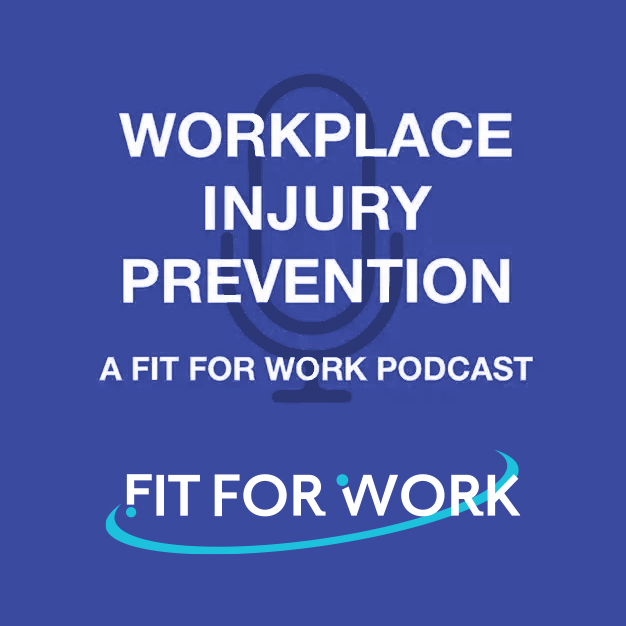By Carly Smith, ATC/L
Injury Prevention Specialist, Fit For Work
As an athletic trainer, I’m often asked about my role in the industry. Most people envision a trainer at a gym or on a football field, helping athletes stay in the game. However, many athletic trainers are helping a different kind of athlete—the industrial athlete—stay safe, healthy, and productive in the workplace.
Industrial athletic trainers are not personal trainers. In the workplace, they focus on preventing injuries, providing treatment, and ensuring employees stay safe, healthy, and productive both on and off the job.
The primary role of an industrial athletic trainer is to proactively prevent workplace injuries. We also provide first-level triage, treatment, and referrals for musculoskeletal and other health issues. With certifications in medical and rehabilitation techniques, our goal is to improve employees’ quality of life—both on the job and beyond.
Let’s look at how an athletic trainer can be a secret weapon for your workforce, acting as an onsite injury prevention expert.
Driving Workplace Safety with Athletic Trainers
A strong focus on preventing injuries, improving safety, and promoting employee health can reduce costs, boost morale, and support productivity in the workplace. Proactive injury prevention programs have been shown to reduce injuries by 50%, with the return on investment ranging from 2:1 to 5:1. Athletic trainers play a key role in these programs, with activities that may include:
Designing Stretching Programs – Studying body mechanics to design site-wide recommendations. The athletic trainer will focus on workers performing repetitive motions using the upper body or those who must crouch or squat often; a stretching program can work wonders to prevent musculoskeletal strain and pain. Any initial employee hesitancy usually morphs quickly into acceptance and even enjoyment as they experience the difference stretching makes. Workers go home better able to spend time with their families, increasing their overall quality of life.
Suggesting Rotation Plans – Using validated ergonomic assessment tools to recommend job rotations. As part of ergonomic and injury prevention programs, these rotations prevent wear and tear on muscles and joints. For example, an athletic trainer can study body posture and mechanics to rotate workers between jobs using upper body vs. lower body strength, or to balance faster-paced hand/wrist tasks vs. slower-paced shoulder movements. Most programs involve once or twice daily rotations to prevent soreness, reduce lost-time injuries, and increase job satisfaction.
Assessing Workstation Design – Improving workers’ body mechanics or ergonomic techniques. How tall is the worktable? How far are workers reaching for tools? These factors can influence postural and musculoskeletal health in logistics, assembly, manufacturing, or office environments. An athletic trainer can recommend modifying a workstation to address these issues and can also provide job coaching. Engineering or process controls may be brought into the equation to relieve employee stressors and prevent injuries.
Providing Wellness Counseling – Offering a trustworthy source to address personal concerns. A report from the World Health Organization reports that 83% of US workers suffer from work-related stress and 54% of workers say that work stress affects their home life.
An athletic trainer can offer educational materials or presentations on stress management, nutrition, hydration, exercise, sleep hygiene, and mental health awareness. Adopting this whole-person approach provides a safe space to address employee concerns, including emotional distress that can lead to on-the-job distraction and physical injury. If your goal is to ensure that workers leave work in better condition than when they came in, wellness counseling is key.
Advising on Non-Work-Related Injuries – Acting as a ready resource for personal health issues. By building relationships, an athletic trainer can encourage employees to take care of themselves – getting an annual healthcare exam or seeking care for a medical concern. For example, an employee sought my advice after feeling like he couldn’t breathe while lying down. Based on his history and symptoms, I expressed concern about a serious underlying condition and urged him to seek immediate medical attention. The employee later informed me that I had saved his life, as he was receiving care for congestive heart failure.
An employee sought my advice after feeling like he couldn’t breathe while lying down. Based on his history and symptoms, I expressed concern about a serious underlying condition and urged him to seek immediate medical attention. The employee later informed me that I had saved his life, as he was receiving care for congestive heart failure.
Assessing Injuries – Providing initial medical attention for injuries and one-time, short-term OSHA first aid. Examples range from a fall or scraped knee to a torn ligament or compound fracture. The athletic trainer acts as a bridge between onsite response and any necessary workers’ compensation medical care. Most injuries can be addressed without the time and expense of going off-site.
Providing Aid during Workplace Emergencies – Caring for employees until paramedics arrive. Athletic trainers are certified to provide CPR and first aid/triage to prevent shock, stabilize injuries, and treat severe bleeding. Another vital contribution is helping organizations develop a cardiac emergency response plan (CERP). For example, I encouraged a client to offer paid CPR classes to supervisors, team leaders, and safety advocates to strengthen their CERP. Later, this plan paid off when an employee had a heart attack at work and lost consciousness. The supervisor was able to provide CPR until paramedics arrived, saving a life. The employee returned to work a month later and recently informed me that he is expecting his first grandchild.
Conclusion
Whether your organization has a team of 14 or a workforce of 1,400, or if you need an injury prevention specialist onsite every day or just a few hours each week, an athletic trainer can be a secret weapon for workforce health. You’ll experience numerous benefits in injury prevention, human connection, and cost reduction. We’re here to improve your employees’ quality of life—on and off the job—by helping them stay safe, healthy, and productive.
Ready to learn more? Contact us today to discover how Fit For Work can enhance your safety program and help foster long, healthy, and productive careers for your workforce.

Carly Smith is an Injury Prevention and Ergonomic Specialist at Fit For Work, bringing eight years of experience with FFW and a total of 10 years in the industrial athletic training field. Originally from Kentucky, Carly relocated to Georgia to attend college and launched her career in Atlanta, where she has continued to develop professionally.





